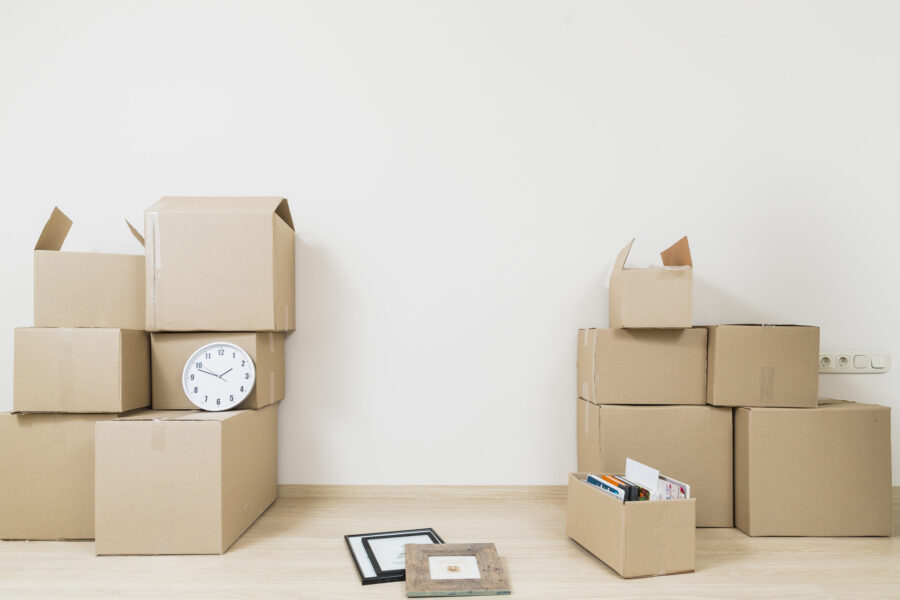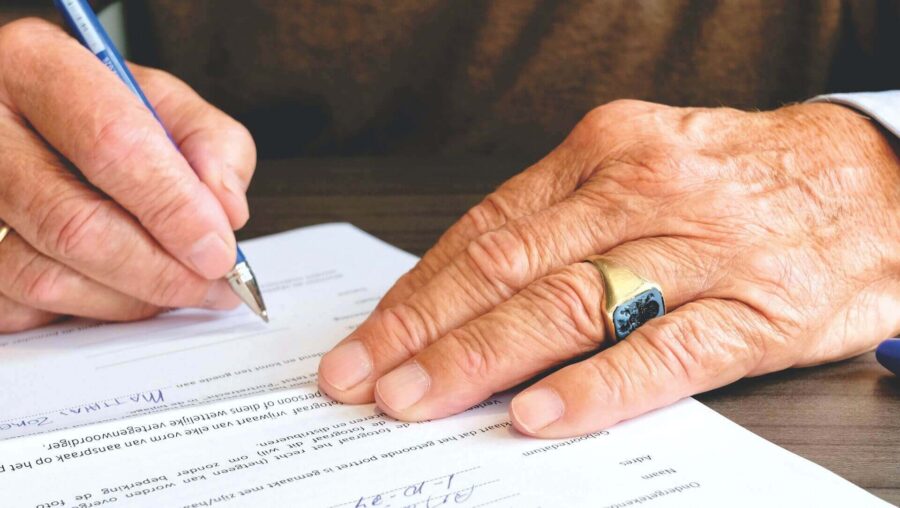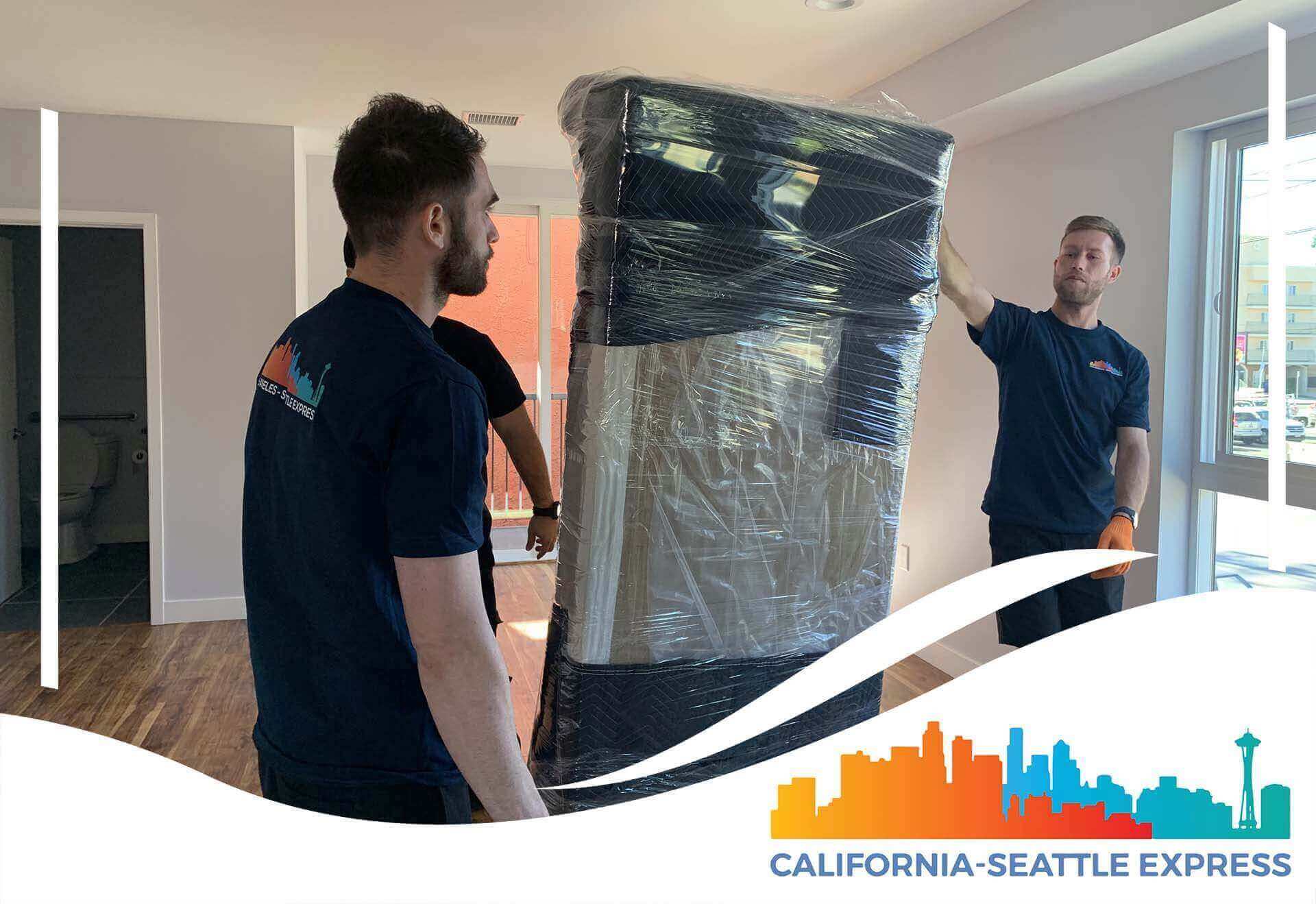Moving into an apartment can be exciting yet overwhelming, especially if it involves cross-country moving. The idea of a new chapter is thrilling, but the process can be challenging, with many details to consider and manage. Learn how to successfully move into an apartment, whether a short distance away or across the country.

Relocating is often accompanied by many expenses, which can quickly add up when leaving the state. One must strike a balance between affordability and efficiency when trying to move out of state on a budget. From cost-saving strategies to time-tested hacks, we’ve got you covered.
How to Handle the Excitement of Moving Into an Apartment for the First Time
Relocating for the first time marks a significant milestone and is often accompanied by a mix of emotions – anticipation, joy, and even anxiety. As you embark on this new journey, try to manage your emotions and expectations for a more enjoyable transition.
First, acknowledge that your emotions may fluctuate during the process. While going to a new place is invigorating, it’s not uncommon to experience depression after relocation. This can come from the stress of the move, leaving behind familiar surroundings, or adjusting to a new environment.
Next, equip a comprehensive list of things you need for your first apartment. Being prepared can ease the stress and help you feel in control. Research and compile a list of essential items like furniture, kitchen appliances, cleaning supplies, and personal items that will make your new space functional and comfortable.
Lastly, if you’re traversing a considerable distance or across the country, it might be necessary to enlist the help of a reliable cross-country moving company. This will allow you to focus on other stuff while your vehicle and stuff arrive safely at the destination. Research various companies, compare quotes, and read reviews to find a service that meets your needs and budget.
#1 Prepare for Moving Into a New Apartment
Relocating from a small town to a big city is a significant transition that requires thorough planning and organization. One of the key steps in the process is getting organized to move by creating a comprehensive plan that covers all of its aspects.
Create a Relocation Timeline and Checklist
A relocation to-do list and an extra new apartment checklist will ensure you don’t miss crucial details. Begin by listing the tasks to complete before, during, and after relocation day. Allocate deadlines for each and prioritize them by importance. A detailed timeline will help you stay on track and prevent last-minute panic.
Downsize and Declutter to Fit Your New Space
As you prepare, consider the size and layout of your new apartment. Evaluate which items you want to bring and leave behind. Research how to downsize for relocation, strategies for assessing your belongings, and how to decide what to keep, sell, or donate.
Donate unwanted items to local charities, organize a garage sale, or give them away to friends and family. Downsizing and decluttering will make the entire process of moving out of state cost-effective and your new space clutter-free and functional.
Gather Packing Supplies and Organize Belongings
Gathering the right supplies is essential for your belongings to be well-protected during the move. Research different packing materials like sturdy boxes, packing paper, bubble wrap, and packing tape.
Organize everything by category, from kitchen and bedroom items to living room stuff. Label boxes to unpack easier and create an inventory list for each box, to keep track of your possessions and identify missing items upon arrival at your new apartment.

#2 Research Relocation Options
When planning a relocation, it’s important to research options and find the most efficient and cost-effective approach. Comparing professional long-distance moving services and DIY options can help you decide what suits your budget and requirements. Start by researching how much movers cost and the various companies in the area.
Compare Professional Long-Distance Moving Services and DIY Options
Professionals can provide a seamless and stress-free relocation. They handle everything from packing and transportation to unloading and assembly of your belongings in the new home.
Some benefits of hiring long-distance movers include their expertise in handling fragile and valuable items, access to specialized equipment, and efficient execution of the relocation process. On the other hand, DIY relocating can be budget-friendly but requires meticulous planning, organization, and often additional costs.
When considering vehicle relocation, evaluate the benefits of car shipping. Professional services can save you time, protect your vehicle from damage during shipping, and provide peace of mind. Compare the costs of shipping your car versus driving it yourself, taking into account fuel costs, potential damage, and the time investment required.
#3 Notify Important Parties About Your Apartment Move-in
Notifying important parties – from friends and family to your bank and utility providers – is a crucial long-distance relocation tip. This can help you maintain communication with vital institutions and loved ones during the process.
Update Your Address With Vital Institutions
One of the first relocation tasks to tackle is updating your address with essential institutions. You should change your address with the United States Postal Service (USPS) to ensure mail is forwarded to your new location.
Additionally, here’s who to notify about moving: your bank, credit card companies, insurance providers, and any subscription services. Also, remember to update the address on your driver’s license and vehicle registration.
Inform Friends and Family of Your Move
Going to a new apartment, especially long-distance, can be an emotional experience. It’s essential to keep your friends and family in the loop about that, as they will want to stay connected and offer support.
Reach out to your loved ones and say goodbye to friends before leaving through phone calls, emails, or social media. Organizing a farewell gathering or a casual get-together is an excellent way to celebrate your new chapter and strengthen bonds with those who matter most.
For anyone struggling with loneliness after relocating to another place or just before leaving, the following video might help you cure the sad feelings and lift you up for the great stuff ahead.
#4 Understand Lease Agreements and Policies
A thorough understanding of lease agreements and policies before settling into a new home is the best way to avoid misunderstandings or conflicts with your landlord. Consider these tips to grasp what you need to rent an apartment.
Firstly, read through the lease agreement carefully and get familiar with the rental terms and conditions. Pay special attention to the lease duration, rent amount, payment schedule, security deposit policies, and clauses related to maintenance, repairs, or modifications.
Secondly, learn your rights and responsibilities as a tenant. Dig into local and state landlord/tenant laws to ensure you are treated fairly and know how to handle potential disputes.
Lastly, store and organize important documents related to your rental, like the lease agreement, rent payment receipts, and correspondence with the landlord. Creating a dedicated folder or digital storage system for these will help keep track of vital information.

#5 Set up Utilities
Setting up utilities is a crucial step in ensuring a comfortable and functional living space. Managing utilities involves transferring existing services or setting up new ones, depending on your situation.
Here’s a guide on how to transfer utilities and what to consider when relocating from a house to an apartment.
- First, determine which utilities you’ll need to set up or transfer, such as electricity, gas, water, internet, and cable services.
- Create a utility list and contact the respective providers to inform them of your relocation. If you’re relocating within the same service area, inquire about transferring your existing services to your new address.
- Schedule the transfer or activation of services a few days before your move-in date to ensure a smooth transition.
- If going to a new city or state, research utility providers in your new area and compare their plans, rates, and offerings.
- Choose providers that meet your needs and budget, and set up new accounts with them. Remember that some may require a deposit, identification, or proof of address to establish a new service.
- Be prepared to provide the necessary information and documentation when setting up your utilities.
- Learn everything about your new apartment’s utility policies. Some rentals may include certain utilities in the monthly rent, while others require tenants to set up and pay for them alone.
- Review your lease agreement and discuss utility responsibilities with your landlord or property manager for a clear understanding of your obligations.
By determining which utilities you need, transferring or establishing new services, and understanding policies, you can create a comfortable and functional living environment in your new home.

Packing Tips and Tricks
Packing is an essential relocation aspect, and doing it efficiently can make all the difference when settling into your new home. For first-time movers or anyone seeking a stress-free experience, consider these packing tips and tricks. These strategies will help you create a packing list and offer guidance on how to relocate for the first time.
Label Boxes With Contents and Room Assignments
One of the best ways to stay organized during relocation is to label boxes with their contents and the room they belong to. This will make unpacking manageable and help you find items quickly.
For instance, pack bedding in a marked box designated for the bedroom to easily locate it when setting up your new space. Color-coding labels by room can also streamline the process and make it easier for cross-country movers or friends to help you to place boxes in their proper locations.
Protect Fragile Items and Disassemble Furniture
Proper packaging techniques can prevent damage when shipping furniture and fragile items. Start by disassembling large furniture, like beds, tables, and shelving units, for easier transport.
If you’re unsure how to do this, research specific guides like “packing a desk guide” for step-by-step instructions; you can also look at the manufacturer’s instructions.
Keep screws, nuts, and bolts in labeled bags and attach them to their corresponding furniture to avoid losing essential components. Protect fragile items by wrapping them in bubble wrap, paper, or soft materials like towels and blankets. Use sturdy boxes with reinforced corners for delicate belongings.
Consider hiring long-distance movers with expertise in packaging and handling fragile items and furniture. This can offer added peace of mind and ensure your possessions arrive in good condition.
Residential Relocation Service
Feeling rushed about your long distance move? We can help you organize and budget so you have everything in place.
Packing Services
Our professional packers have methods and techniques to ensure all your items are intact during and after the move.
Car Shipping Services
We can ship your vehicles using the best freight options available. Your car will be moved safely and securely and arrive as planned.
Personalize Your Apartment and Explore the Community After Getting Settled
Congratulations! You’ve moved successfully with the help of a long-distance moving company, and now it’s time to settle into your new home and surroundings. The next exciting phase involves personalizing your apartment and getting to know your new community.
- Begin by adding personal touches like family photos, artwork, and cherished mementos to create a warm and inviting atmosphere.
- Don’t be afraid to experiment with colors, textures, and patterns to express your unique style and personality – have fun and let your creativity shine.
- Step outside and explore the community. This is an excellent opportunity to meet new people, discover local gems, and establish connections that will enrich your life.
- Visit nearby parks, cafes, and shops to experience the charm and culture of your new neighborhood. Attend local events to build friendships and create lasting memories.
- As you settle in, remember that it’s okay to feel a mix of emotions. Embrace the excitement, curiosity, and even the occasional twinge of homesickness. It’s all part of the beautiful journey of starting fresh in a new place.

Manage Moving Day With the Help of Professional Cross-Country Movers
To ensure a smooth and stress-free relocation day, consider enlisting the help of professionals like California-Seattle Express. As experienced movers from Seattle to California, and vice versa, we offer reliable car shipping services to make your relocation seamless and efficient.
Don’t hesitate – to reach out to California-Seattle Express today to simplify the process and enjoy the peace of mind that comes with knowing your belongings and vehicle are in the hands of trusted professionals.
FAQ
How Can I Find the Right Apartment That Suits My Needs and Budget?
To find the right apartment, start by setting a budget and determining your must-have features, such as location, size, amenities, and proximity to work or school. Conduct research online using apartment search platforms and local classifieds, and consider working with a real estate agent to access additional listings.
What Should I Include in My Timeline and Checklist When Moving Into an Apartment?
Your timeline and checklist should include tasks like researching moving companies, setting a moving date, notifying important parties, gathering packing supplies, packing, transferring utilities, updating your address, and unpacking and organizing your new home.
How Can I Downsize and Declutter My Belongings to Fit Into a Smaller Living Space?
To downsize and declutter, start by sorting your belongings and deciding what to keep, donate, sell, or discard. Focus on keeping essential and sentimental items while letting go of duplicates or things you no longer use or need.
What Are the Pros and Cons of Hiring a Professional Moving Company Versus a DIY Move?
Hiring professionals offers benefits such as expert handling of your belongings, efficient execution, and reduced physical labor. However, it can be expensive. A DIY relocation can be more budget-friendly but requires more planning, organization, and effort.
How Do I Update My Address With the Post Office, Banks, and Other Important Institutions?
Update your address by submitting a change of address request with USPS, contacting your bank and credit card companies, informing insurance providers, and updating your address on your driver’s license and vehicle registration.
What Should I Look for When Reviewing My Lease Agreement and Apartment Policies?
Review your lease agreement for information about the rent, security deposits, maintenance responsibilities, and any restrictions on modifications or pets. Familiarize yourself with your rights and responsibilities as a tenant according to local and state laws.
How Do I Set up Utilities, Internet, and Renters Insurance for My New Apartment?
Contact utility providers to transfer or set up new services, research internet providers and plans, and obtain renters insurance to protect your belongings against theft, damage, or other losses.
What Are Some Effective Packing Tips and Tricks for Moving Into an Apartment?
Effective packing tips include creating a list, gathering appropriate supplies, labeling boxes with contents and room assignments, protecting fragile items, and disassembling furniture.
How Can I Make Moving Day Less Stressful and More Efficient?
Prepare for moving day by creating a plan, enlisting help from friends or professional movers, packaging essentials in a separate box, and having a checklist to ensure all tasks are completed.
What Are Some Strategies for Unpacking, Organizing, and Personalizing My New Apartment?
Begin by unpacking essentials, then focus on one room at a time. Organize your belongings, add personal touches with photos and décor, and explore your new community to help make your new apartment feel like home.





